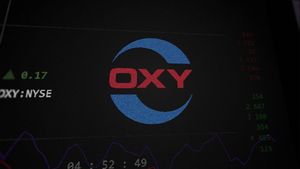
The financial markets are currently experiencing an exhilarating surge, with a multitude of companies, particularly those at the vanguard of the artificial intelligence (AI) revolution, achieving unprecedented stock valuations. As of October 2025, major indices like the S&P 500, Dow Jones Industrial Average, and Nasdaq Composite have repeatedly scaled new all-time highs, signaling a robust period of investor confidence and significant technological transformation. This widespread ascent is primarily attributed to strong corporate earnings, the anticipation of Federal Reserve interest rate adjustments, and, most profoundly, an insatiable enthusiasm for AI and its pervasive potential across nearly every industry sector.
This bullish momentum underscores a pivotal moment in financial history, where technological innovation is not merely driving growth but fundamentally reshaping market dynamics. The record-breaking performances of these companies reflect a deep-seated belief among investors in the long-term profitability and disruptive capabilities of AI, setting a new benchmark for market optimism and strategic corporate direction.
The AI Tidal Wave: Specifics of the Market's Ascent
The current market rally is largely a narrative of innovation meeting demand, with AI serving as the central protagonist. Over the past year, and particularly in the run-up to October 2025, the demand for AI infrastructure, advanced chips, and sophisticated software solutions has exploded, creating a fertile ground for companies positioned to capitalize on this technological shift. This phenomenon has translated directly into soaring stock prices and market capitalizations for key players.
Leading this charge are the semiconductor giants, whose chips are the bedrock of AI computation. Nvidia (NASDAQ: NVDA) continues its meteoric rise, with its stock hitting new all-time highs and surpassing a staggering $4 trillion market capitalization in July 2025. This unprecedented growth is a direct result of "insatiable AI demand" for its GPUs. Similarly, Broadcom Inc. (NASDAQ: AVGO) has reported robust Q3 results, with AI products projected to generate $12 billion in revenue by year-end, driven by its customized silicon ASIC chips and strategic partnerships with hyperscalers. Advanced Micro Devices (NASDAQ: AMD) has also seen significant opportunities, with its Q4 revenue increasing by 24%, fueled by its Data Centre and Client division's AI-capable offerings. Even Intel (NASDAQ: INTC), a long-standing chipmaker, has seen its shares surge, gaining approximately 80% year-to-date by September 2025, buoyed by major investments and potential new foundry customers. Korean supplier SK Hynix (KRX: 000660) reported record revenues in Q2 2025, primarily from AI memory products.
Beyond hardware, the software and cloud infrastructure providers essential for AI adoption have also witnessed exceptional performance. Palantir Technologies (NYSE: PLTR), specializing in data analytics and AI software, has seen its shares more than double, effectively translating AI capabilities into tangible revenue. Arista Networks (NYSE: ANET) reported strong FY22 results, with revenue up 20% year-on-year, driven by its Etherlink AI platforms and EOS AI Agent innovations. Snowflake (NYSE: SNOW), an AI and cloud computing company, reported strong Q3 results with product revenue up 28% year-on-year. Super Micro Computer (NASDAQ: SMCL), a provider of AI-optimized server solutions, saw its Q4 FY22 revenue increase by 30% year-on-year. Furthermore, Applied Digital (NASDAQ: APLD) is poised for substantial growth through its AI-optimized data center leasing partnerships, projecting billions in potential revenue.
The broader tech landscape, particularly the "Magnificent Seven," continues to dominate, with many leveraging AI as a core growth engine. Microsoft (NASDAQ: MSFT), alongside Nvidia, crossed the $4 trillion market cap in July 2025, with AI remaining a central investment theme. Meta Platforms (NASDAQ: META) is rapidly evolving into an AI leader, utilizing the technology to enhance user engagement across its platforms. Even Tesla (NASDAQ: TSLA), despite some recent challenges, saw its stock climb above $450 per share, pushing its market value past $1.5 trillion, reflecting strong investor confidence in its EV and clean energy leadership, particularly after reporting record Q3 deliveries.
Other notable companies outside the immediate AI nexus have also reached new highs, demonstrating broader market strength. Cybersecurity firm CyberArk Software Ltd (NASDAQ: CYBR) achieved an all-time high of $494.53 USD, reflecting robust performance and strong revenue growth, further bolstered by its proposed merger with Palo Alto Networks. Nike (NYSE: NKE) shares ended significantly higher after surprisingly recording a quarterly sales increase, exceeding analyst expectations. Silicon Motion Technology (NASDAQ: SIMO) hit an all-time high of $98.8 USD, driven by strong market demand for its SSD controller solutions. Lastly, O'Reilly Automotive (NASDAQ: ORLY) has delivered substantial gains, benefiting from macro tailwinds like an aging vehicle fleet and internal innovations in logistics. The confluence of these factors paints a picture of a dynamic market, heavily influenced by technological advancements and strong corporate execution.
The Winners and the Landscape of Opportunity
The current market climate, heavily influenced by the AI boom, is creating distinct winners and losers, reshaping industry landscapes and presenting both immense opportunities and significant challenges. The companies that have successfully integrated AI into their core strategies or provide essential AI infrastructure are unequivocally the primary beneficiaries.
Semiconductor manufacturers like Nvidia (NASDAQ: NVDA), Broadcom Inc. (NASDAQ: AVGO), and Advanced Micro Devices (NASDAQ: AMD) are experiencing unprecedented demand for their high-performance chips, which are the fundamental building blocks for AI models and data centers. Their ability to innovate and scale production directly translates into increased revenue and market dominance. These companies are not just selling components; they are powering the next generation of technological advancement, making them indispensable in the current economic paradigm. SK Hynix (KRX: 000660), a key memory supplier, is also seeing a massive uplift from its AI memory products.
AI software and cloud service providers such as Palantir Technologies (NYSE: PLTR), Snowflake (NYSE: SNOW), and Microsoft (NASDAQ: MSFT) are winning by enabling businesses to leverage AI. Their platforms and applications are crucial for data analysis, machine learning, and automation, driving efficiency and innovation across various sectors. Microsoft, in particular, benefits from its extensive cloud infrastructure (Azure) and strategic investments in AI, solidifying its position as a comprehensive AI solutions provider. Arista Networks (NYSE: ANET) and Super Micro Computer (NASDAQ: SMCL) are critical enablers, providing the networking and server infrastructure necessary for large-scale AI deployments. Applied Digital (NASDAQ: APLD) is uniquely positioned to benefit from the leasing of AI-optimized data centers, securing long-term revenue streams.
Even traditional sectors are seeing winners by adapting to the new technological landscape. Companies like O'Reilly Automotive (NASDAQ: ORLY) are demonstrating that strong operational efficiency and a focus on core business can still yield significant returns, even amidst a tech-driven market. CyberArk Software Ltd (NASDAQ: CYBR) highlights the growing importance of cybersecurity in an increasingly digital and AI-driven world, making it another clear beneficiary.
On the other hand, companies that are slow to adapt to AI, or whose business models are directly threatened by AI-driven automation and efficiency, could face significant headwinds. Legacy industries or companies reliant on outdated technologies may struggle to compete with AI-enhanced rivals. While the current focus is on the "winners," the long-term implications for those unable to pivot effectively could be challenging, potentially leading to market share erosion and decreased profitability. The rapid pace of technological change necessitates continuous innovation, and those who fail to keep up risk being left behind in this AI-fueled market.
Wider Significance and Historical Context
The current market phenomenon, characterized by numerous companies hitting all-time highs driven by AI, extends far beyond individual corporate successes; it represents a significant inflection point in broader industry trends, with potential ripple effects across the global economy. This era mirrors past technological revolutions, such as the dot-com boom of the late 1990s, but with a more tangible and immediate impact on productivity and corporate earnings, thanks to the mature state of digital infrastructure and data availability.
The pervasive integration of AI is not merely an incremental improvement but a foundational shift. It is accelerating automation, enhancing data analysis capabilities, and driving unprecedented levels of efficiency across various sectors, from healthcare and finance to manufacturing and logistics. This trend implies a future where AI-powered solutions become standard, potentially rendering non-AI-integrated businesses less competitive. The ripple effects are already visible: companies that are early adopters and innovators in AI are attracting top talent and capital, while those lagging risk losing market share and relevance. Competitors are compelled to invest heavily in AI research and development, creating an arms race for technological supremacy.
Regulatory and policy implications are also beginning to emerge. Governments worldwide are grappling with how to regulate AI responsibly, addressing concerns about data privacy, ethical AI development, job displacement, and market concentration. The sheer scale and speed of AI adoption may necessitate new legislative frameworks to ensure fair competition, protect consumers, and manage the societal impact of automation. The U.S. government's investments in chipmakers like Intel, for instance, highlight a strategic imperative to bolster domestic technological capabilities and supply chain resilience.
Historically, periods of rapid technological advancement have often been accompanied by speculative bubbles. While the current AI-driven rally shares some characteristics with past booms, such as heightened investor enthusiasm and soaring valuations, many analysts argue that the underlying fundamentals of AI's economic impact are more robust. Unlike some past speculative surges, AI is demonstrating concrete applications and revenue generation across diverse industries, from drug discovery to personalized marketing. The sustained earnings growth reported by companies like Nvidia and Microsoft provides a stronger basis for their valuations compared to the often-unprofitable internet startups of the dot-com era. However, the risk of overvaluation in certain niche segments remains, warranting careful investor scrutiny. The current environment can be compared to the early days of the internet or the advent of widespread computing, where foundational technologies paved the way for decades of innovation and economic expansion.
What Comes Next: Navigating the AI Frontier
As the market continues its AI-fueled ascent, the immediate and long-term possibilities are vast, yet they also come with inherent challenges and the need for strategic adaptation. In the short term, we can expect continued robust performance from companies deeply entrenched in the AI ecosystem, particularly those providing essential hardware, software, and cloud infrastructure. The demand for more powerful chips, sophisticated AI models, and scalable data solutions is unlikely to wane soon, suggesting sustained revenue growth for leaders in these fields. However, market volatility could increase as investors become more discerning about which AI applications will truly generate long-term value versus those that are merely speculative.
Looking further ahead, the long-term possibilities involve a complete re-imagining of various industries. AI is set to drive significant advancements in personalized medicine, autonomous systems, advanced materials science, and even creative industries. This will necessitate strategic pivots for many companies, including those outside the tech sector, to integrate AI into their operations, product development, and customer engagement strategies. Businesses that fail to adapt risk becoming obsolete, while those that successfully leverage AI for innovation and efficiency will unlock new market opportunities and solidify their competitive advantages.
Emerging market opportunities will likely include specialized AI services, ethical AI development and auditing, AI-driven cybersecurity solutions, and novel applications of generative AI. Challenges may arise from increased regulatory scrutiny, potential talent shortages in AI expertise, and the need for significant capital investment in AI infrastructure. The geopolitical landscape could also play a role, with nations vying for AI supremacy, potentially leading to trade tensions or increased domestic investment in AI.
Potential scenarios range from a sustained period of AI-driven growth, leading to a new era of productivity and prosperity, to a more volatile market correction if investor expectations outpace actual revenue generation or if unforeseen ethical or regulatory hurdles emerge. Investors should watch for continued innovation, clear revenue pathways from AI products and services, and how companies navigate the evolving regulatory environment. The ability of companies to translate AI capabilities into tangible business outcomes will be the ultimate determinant of their long-term success.
Comprehensive Wrap-up: Navigating the New Market Paradigm
The current financial landscape, marked by numerous companies achieving all-time stock highs, is undeniably a testament to the transformative power of Artificial Intelligence. The key takeaway from this period is the profound impact AI is having on corporate earnings, investor sentiment, and broader market dynamics. Companies at the forefront of AI chip manufacturing, software development, and cloud infrastructure are not just experiencing growth; they are fundamentally reshaping industries and setting new benchmarks for valuation. This surge is underpinned by strong corporate fundamentals and a clear demand for AI-driven solutions across various sectors, distinguishing it from purely speculative bubbles of the past.
Moving forward, the market is poised for continued evolution under the influence of AI. While the current euphoria is palpable, investors must remain vigilant. The assessment of the market suggests a sustained period of innovation and growth for companies that can effectively integrate and monetize AI. However, the rapid pace of technological change also implies that adaptability and strategic foresight will be paramount. Companies that invest in ethical AI development, navigate the emerging regulatory landscape, and continuously innovate their AI offerings are likely to maintain their leadership positions.
Final thoughts on the significance and lasting impact point to a new era of economic activity driven by intelligent automation and data-driven insights. AI is not merely a technological trend; it is a foundational shift that will redefine productivity, competitive advantage, and the very nature of work. Its lasting impact will be felt for decades, shaping global economies and societies.
What investors should watch for in the coming months includes continued strong earnings reports from AI leaders, any significant shifts in regulatory policy regarding AI, the emergence of new AI applications and disruptive technologies, and how traditional industries begin to successfully integrate AI into their operations. Monitoring these factors will be crucial for understanding the trajectory of this AI-fueled market and identifying both opportunities and potential risks. This content is intended for informational purposes only and is not financial advice





